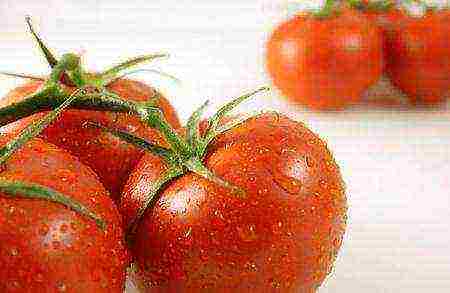Content
- 1 Summer varieties of apple trees
- 2 Autumn varieties of apple trees
- 3 Winter varieties of apple trees
- 4 Apple varieties suitable for growing in cold climates
- 5 Classification of varieties by traits
- 6 Apple trees for the middle lane
- 6.1 Apple-tree Elena
- 6.2 Apple Champion
- 6.3 Apple-tree Orlovskoe striped
- 6.4 Apple tree Sun
- 6.5 Apple tree Streyfling
- 6.6 Apple tree Idared
- 6.7 Apple-tree Belfer-Chinese
- 6.8 Apple-tree Borovinka
- 6.9 Apple tree Gloucester
- 6.10 Apple tree Kovalenkovskoe
- 6.11 Apple tree Jonathan
- 6.12 Apple tree Florina
- 6.13 Apple Royalty
- 6.14 Apple varieties at their summer cottage - video
- 7 Varietal planning of an apple orchard
- 8 Apple varieties for the middle and northern regions of Russia
- 9 Winter-hardy apple varieties for the southern regions
- 10 Apple varieties by species
- 11 Columnar varieties of apple trees
- 12 Growing conditions for apple trees
It is difficult to imagine a summer cottage without an apple tree - this crop is grown widely and everywhere throughout Russia, and its fruits are familiar to everyone from childhood. These fruit trees are capable of growing and bearing fruit for many years, but even such plantings need to be renewed sometimes. Therefore, if a decision was made to plant a new apple tree, then this issue should be approached with special meticulousness:
- firstly, you need to know which varieties are suitable for growing in the region where the site is located. When purchasing an apple tree seedling, you should always take into account the climatic zone of your garden, otherwise the apple tree will freeze and the money will be wasted;
- secondly, it is necessary to decide on the ripening period of the crop, because it greatly affects the various qualities of the fruits themselves, for example, keeping quality and shelf life. It is important to know this before buying an apple tree, so as not to throw away the resulting crop later.
All apple trees are conventionally divided into summer, autumn and winter according to the ripening period. It is clear that the former can be called early ripening, while the latter patiently wait for their ripening until mid-autumn. On the one hand, it is, but it is better to consider the features of summer, autumn and winter varieties separately.
Summer varieties of apple trees
Apple tree summer striped
Summer varieties of apple trees ripen in the second half of August. Basically, the varieties belonging to this group are characterized by a friendly harvest. On the one hand, this is good, because you can pick all the apples in one or two times and eat, process, or put up for sale.
On the other hand, it is necessary to constantly monitor and examine the fruits on the tree in order to prevent volunteers: it is the summer varieties of apple trees that are prone to a quick harvest drop, and if the moment of harvest was missed, then you will have to choose the healthiest fruits from the ground.
The shelf life of apples, even with timely harvesting, leaves much to be desired - up to one month.
But at the same time, it is in the fruits with an early ripening period that the most vitamins and substances useful to humans are contained. It is generally accepted that summer apples are small because they ripen earlier. In fact, this is not the case, there are also large-fruited summer varieties.
Melba
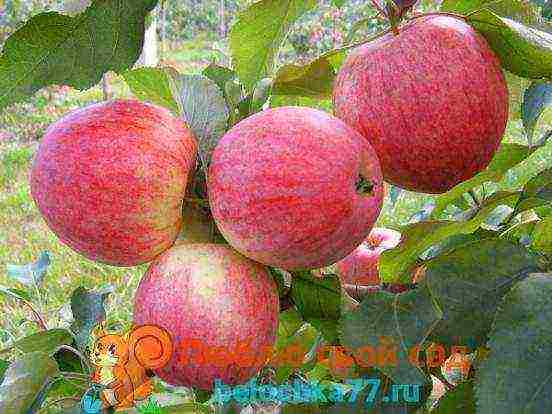
Some fruits ripen up to 200 g and have a yellow color with a slight pink blush.The consistency of the pulp is fine-grained, juicy, and has a white color. Despite the fact that the variety belongs to the summer, the fruits of "Melba" are well stored for up to two months.
Wellsie is considered the best pollinator.
Recently, the Melba variety, according to gardeners, has changed. After the first abundant fruiting, the apple tree is prone to freezing. The fact is that she gives all her strength to the development of fruits and does not have time to prepare for winter. Therefore, it is recommended to pay attention and provide her with proper care after the first real fruiting (it comes in the fifth year of life), and the next year the risk of her freezing will disappear.
Candy
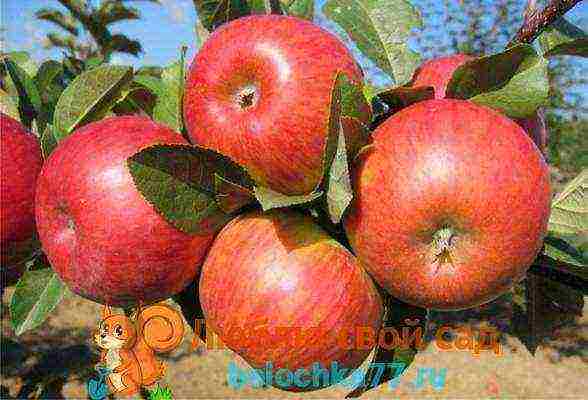
By taste, the fruits are classified as sweet-sour. Outwardly, they have a rather interesting light yellow color with a dashed red blush. Apples ripen up to 120 g. The harvest can hardly be called friendly, so there is an opportunity for a long time to eat fresh apples straight from the tree. Despite the fact that the variety belongs to the summer ripening period, the fruits stick to the tree quite tightly and do not fall off.
Lungwort
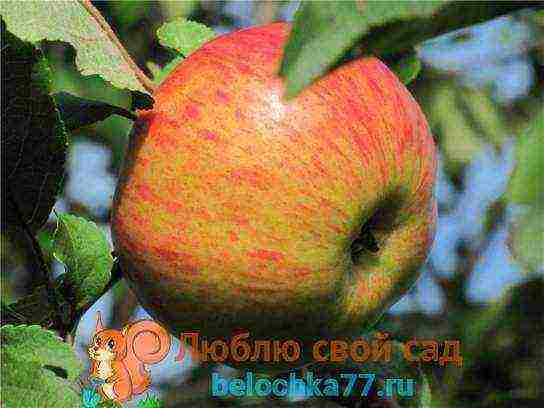
An excellent variety for processing and conservation. Fruits are medium-sized, weighing 100 ... 150 g, have a very juicy aromatic pulp. When fully ripe, apples are yellow with a washed-out red blush and have a sweet honey flavor. It is also noteworthy that the fruits can be consumed even when not quite ripe. The variety is resistant to scab and is one of the most unpretentious.
Summer striped
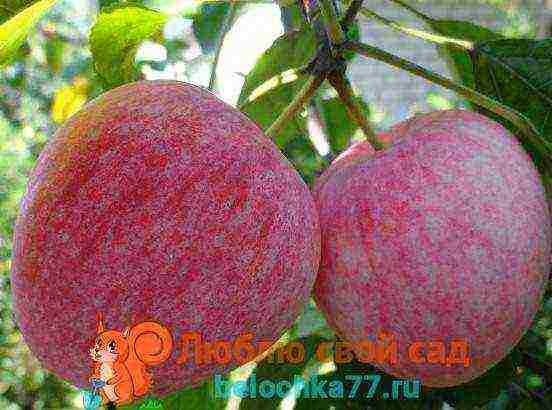
The variety ripens one of the earliest, already at the end of July. The crown of the tree (rare pyramidal) gives the apple tree a special decorative effect. However, there are problems with harvesting and storage: the fruits crumble heavily, and they are stored in the refrigerator for only up to three weeks. Average weight of fruits - up to 150 g. The skin is thin, the flesh is loose, but juicy. The taste of apples is sweet and sour with a pronounced aroma. The color of the fruit is green, but abundantly covered with a crimson-red blush. The tree begins to bear fruit already in the fourth year.
Grafting apple trees in spring for beginners
Ligol
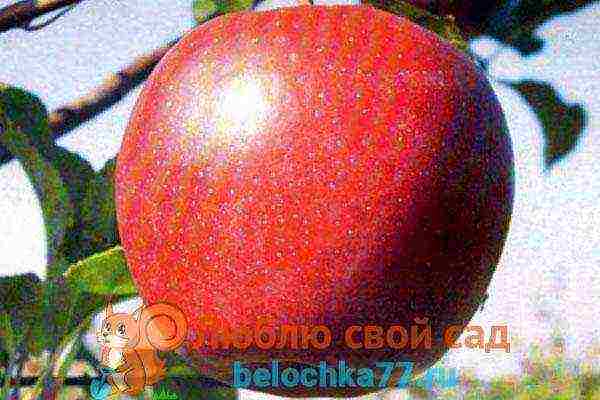
Depending on the observance of the conditions of agricultural technology "Ligol" produces fruits weighing from 150 to 350 g. The main color of apples is yellow, diluted with red blush. The consistency of the pulp is grainy, juicy, crunchy. Apples have an excellent presentation: glossy rind, excellent transportability. The variety is also notable for its high dessert taste.
And under the right storage conditions, the crop can be stored for six months, which is simply unrealistic for other summer varieties. the fruits themselves are resistant to scab and some other diseases, but the tree is susceptible to bark diseases.
The best pollinators for this variety are Idared, Spartan, Lobo, Champion.
Chinese woman

Differs in very small fruits weighing 30 ... 40 g, while the tree bears fruit every year and gives abundant harvests. Begins to bear fruit early, already in the third year. Apples are consumed both fresh and canned. In addition, they are used for the preparation of compotes, jams, juices, wines, etc. Apples crumble a lot and have a short shelf life, so they are picked quickly. Variety "Kitayki" is subdivided into several sub-varieties, differing mainly only in the size of apples and their color.
Early summer varieties of apple trees, a short description, fruiting: video
Autumn varieties of apple trees
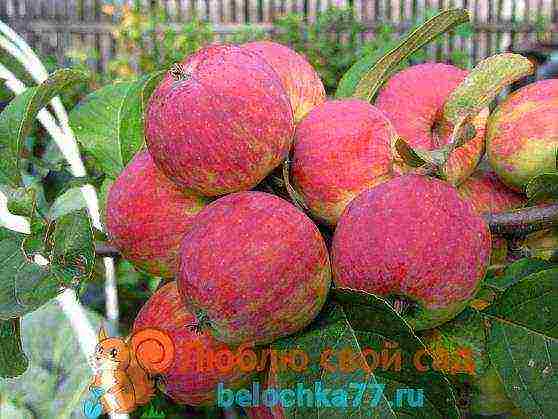 Autumn apple variety Uralets
Autumn apple variety Uralets
Fruits from trees of autumn ripening period can be harvested from late August - early September. In this case, there will not be such a friendly drop of apples, and the time of collection can be determined as follows: if there are at least a few large healthy apples on the ground, you can start harvesting.
Autumn varieties do not differ in a particular harvest friendliness, therefore they are harvested in 2-3 visits.
The shelf life of the harvested apples, in contrast to the summer varieties, is longer and averages three months.
But over time and with improper storage, the pulp becomes tender and loose. Most of the autumn apple varieties are great not only for fresh consumption, but also for processing.
Spartan
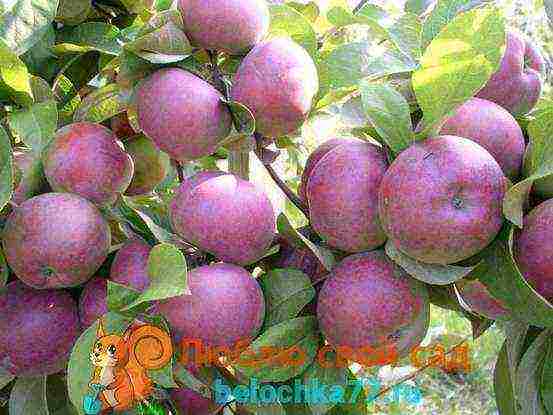
The color of the fruit has a basic yellow color, covered with a dark burgundy blush. The rind is quite dense with a waxy bloom. The consistency of the pulp is dense and juicy, aromatic. The taste is sweet with a pleasant subtle sourness. The yield of the apple tree is high, increasing with age. However, one should take into account the fact that the winter hardiness of this variety is average, therefore, for its successful cultivation, it will be necessary to periodically resort to agrotechnical methods to ensure protection in severe winters.
The advantages of the variety, in addition to the high commercial qualities of apples, include their keeping quality and resistance to a complex of diseases.
Spring pruning for beginners
Orlovskoe striped
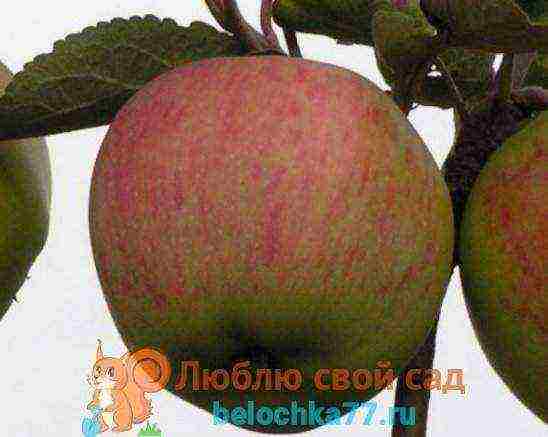
Fruits weighing 120 ... 150 g have a golden color and are covered with a bright crimson blush. The taste of apples is sweet and sour, since the acid is felt quite strongly, while the content of vitamins in such apples is very high. The tree begins to bear fruit already in the fourth year of life, yields abundant, is resistant to scab. The skin of the fruit is very thin, therefore, special care should be taken when collecting and transporting it so as not to damage it.
Champion

Apples of this variety are considered large enough, as they reach a weight of 160 ... 180 g and ripen evenly. A blurry orange blush covers the yellow-green apple, the skin is very thin, and therefore the fruits have average transportability and keeping quality. The advantages of the variety include early maturity, high yield, the possibility of fresh consumption or use in processing. Average winter hardiness.
Autumn striped

The fruits of this variety of apple trees reach 200 g. Their color is yellow-red, the pulp of a loose consistency has an excellent dessert taste. a feature of the variety is a clear frequency of fruiting - once every two years. The yield of the tree is very high, but fruiting will have to wait long enough: the first apples will appear at the age of seven years.
Zhigulevskoe
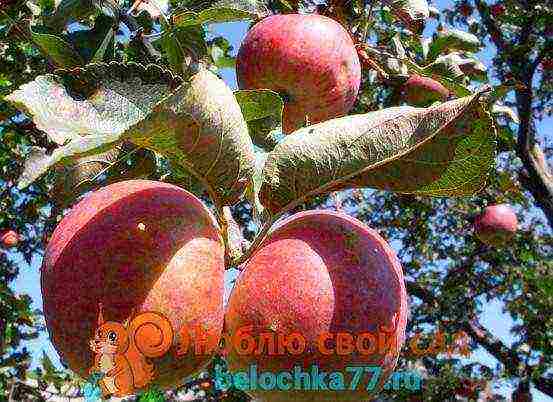
Fruits can weigh from 120 to 200 g, some can ripen up to 250 g. Fruits are not very juicy, sweet and sour, they ripen uncommonly. At a young age, bears fruit annually. This variety has no special distinctive qualities, and gardeners are quite neutral towards it.
How to prune an apple tree correctly
Grushevka
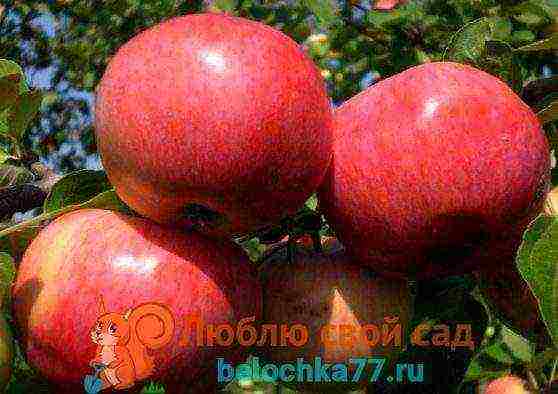
Fruits are medium-sized, weighing 80 ... 120 g with a thin skin and waxy bloom, light green with a red striped tan. The pulp is juicy, at the same time loose, aromatic and has a sweet and sour taste. The peel of the apple itself is thin. The variety is very winter-hardy.
Gala
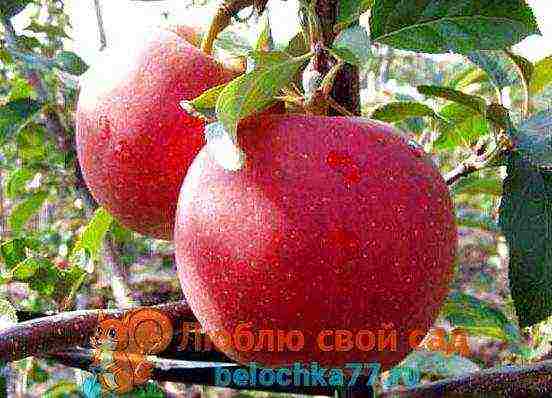
The fruits are medium-sized - from 100 to 150 g. The apple itself is yellow, but an orange-red blush covers almost the entire surface of the fruit. The taste is close to sour with sweet notes. The harvested crop is stored on average up to two months, and in a refrigerator - up to 5 ... 6 months. The winter hardiness of the tree is average.
Glory to the Winners
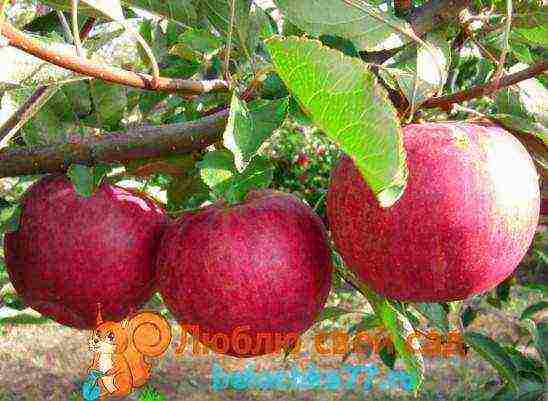
In areas with a cold climate, the apple tree is considered to be of autumn ripening, in more southern regions it bears fruit earlier. But the ability to quickly shed crops in this case remains. Fruits weighing 150 g have a green color with a blurred blush and a pleasant sweet and sour taste. The cream-colored pulp is very juicy and aromatic. The tree is vigorous.
Bogatyr
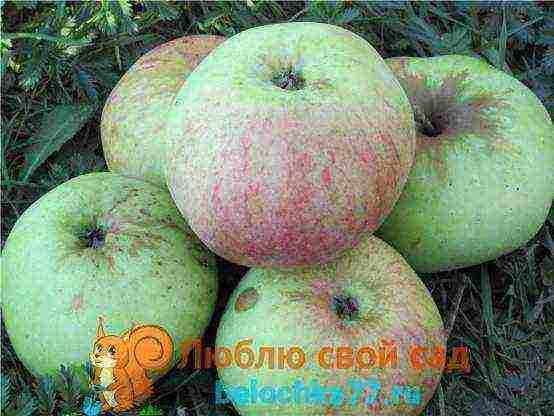
The tree is vigorous, tall (up to 5 m), spreading with fruits weighing 120 ... 150 g (some can reach 200 g) is a fast-growing variety and yields a harvest in five years. Apples are yellow-green in color with a slight pink blush. The variety is considered fruitful, scab-resistant and winter-hardy, but at the same time the fruits are not very juicy, they also cannot boast of any outstanding taste characteristics.
Autumn varieties of apple trees, a short description, fruiting: video
Winter varieties of apple trees
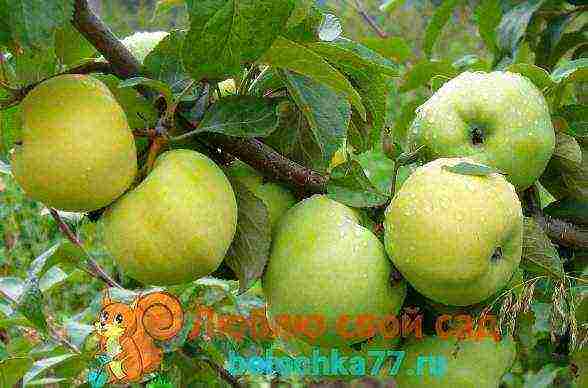
They are intended for winter storage. During the summer season, they do not have time to ripen to the end, and if you try to bite a winter apple while picking it, it will be terribly astringent and sour, which will not fit in your head with the selected variety.
And all because the fruits of the winter ripening period will be ready for use only when ripe in boxes during storage. Therefore, a gardener growing a winter variety of apple trees will be able to put juicy and sweet fruits from their site on the table for the New Year. At the final ripening, the apple becomes varietal, has a characteristic aroma and taste of pulp.
The undoubted advantages of growing winter varieties of apples include the possibility of their fresh consumption in winter, however, for this it is necessary to have a place for ripening the crop in boxes and to ensure normal storage conditions.
There are several rules to help preserve the crop during storage:
- sharp temperature changes in the cellar (the place where apples are stored) should not be allowed, the recommended temperature in it is about + 60C;
- you need to periodically sort out the apples and eliminate the damaged ones (only you need to do this in the basement too, without taking the boxes out of the storage area);
- different varieties must be stored separately;
- it is necessary to collect apples in a timely manner (to determine the timing of collection, they usually pay attention to the stalk: if it is easily separated from the branch, then apples can be harvested).
The ripening dates of winter apple trees, depending on the variety and region of cultivation, are at the end of September - beginning of October.
Lobo
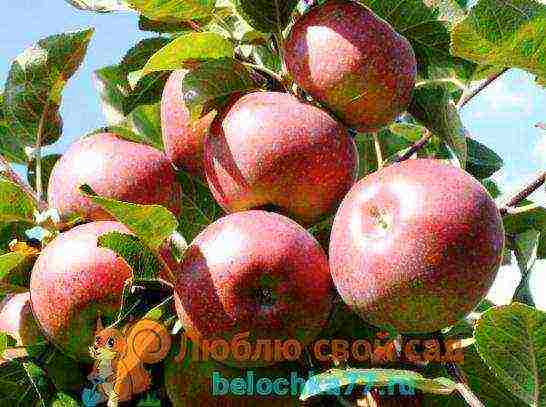
The fruits are medium or large, depending on the care of the apple tree, have a yellowish color, diluted with a bright red blush. The stalk is very short, so at first glance it may seem that the apples are "stuck" to the branches.
The advantages of the variety include a wonderful sweet and sour taste of apples with an incredibly juicy texture, attractive appearance and resistance to arid conditions.
But there are also disadvantages: the average winter hardiness of the tree and an extremely short shelf life compared to other winter varieties of apple trees.
Florina
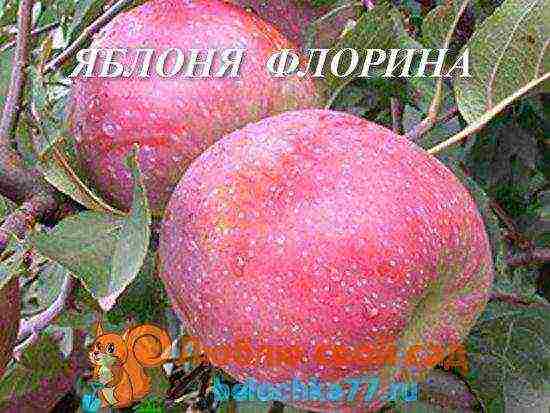
Medium fruits - from 100 to 150 g with juicy fragrant pulp have a light yellow color with a red striped blush. Winter hardiness of the tree is average, the taste of the fruit is good sweet-sour. This variety is distinguished by its resistance to scab and a complex of other diseases.
Currency
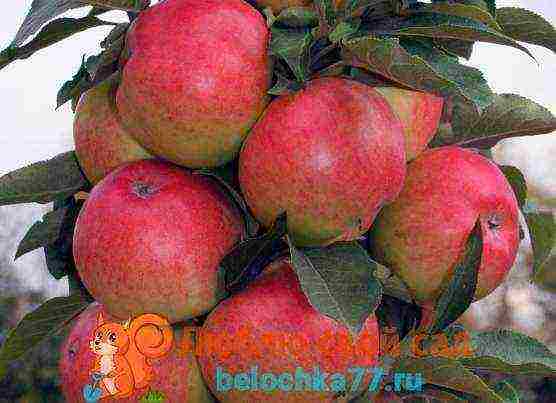
The variety is columnar and therefore requires special care. The fruits are golden with a red blush, have a sweet and sour taste, the flesh is juicy white. Stored up to 3 months. Apples reach a weight of 200 g, subject to all the rules of agricultural technology.
Columnar apple trees - planting and care
Semerenko
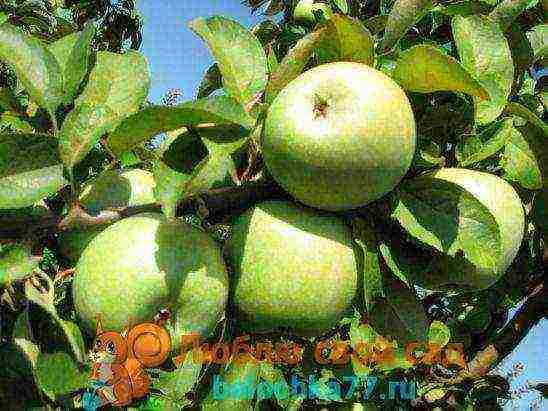
Apples are bright green, weighing from 150 to 200 g, have a crispy firm pulp. The taste is sweet and sour. The fruits are excellently transported and stored subject to storage conditions until summer, therefore this variety is very popular among gardeners.
Sinap
 Sinap North
Sinap North
A vigorous tree with fruits weighing 120 g is characterized by high winter hardiness and early maturity. Apples yellow with a brown blush have a pleasant sweet and sour taste and juicy white pulp. The shelf life of apples is excellent, until May next year. In addition to fresh consumption, the fruits are also suitable for various types of processing.
Welsey
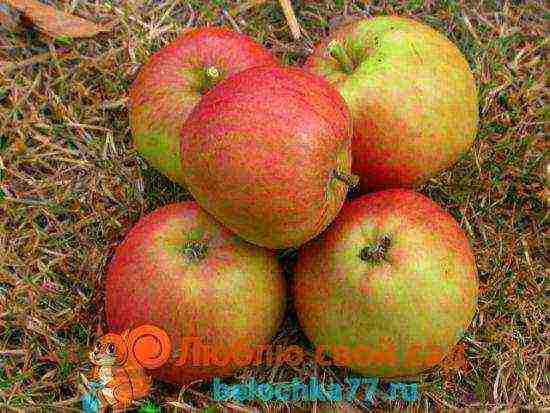
The fruits grow up to 160 g in weight with an unusually orange color. The pulp is sweet and sour, juicy, has a pleasant aroma. The best pollinator for Welsey is Melba. The fruits are characterized by high keeping quality until the end of February and are mainly intended for storage and fresh consumption when they are fully ripe.
Pear - planting and caring for seedlings
Golden Delicious
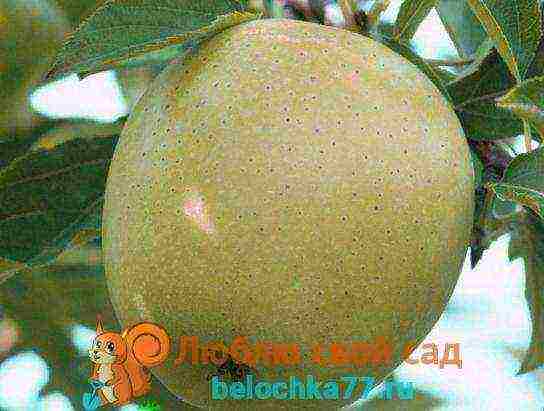
The tree of this variety is not tall - it grows up to only 3 m, which makes harvesting easier.It begins to bear fruit relatively early, already in the third year. As they ripen, the fruits change color from bright green to golden yellow.
The size of one fruit can reach up to 200 g when grown in the southern regions, of course, in the middle lane, you will have to be content with the average size of apples. The taste of apples is sweet dessert with a noticeable sourness.
The best pollinators for Golden Delicious are Idared and Semerenko. The main disadvantages of the variety are low winter hardiness and susceptibility to a complex of diseases.
Orlik

The tree is very compact, yet fruitful and fast-growing. The taste of the fruit is very good sweet and sour, the pulp is juicy and aromatic, contains a large amount of vitamins. The disadvantages of the variety include shedding fruit and the frequency of fruiting.
Antonovka
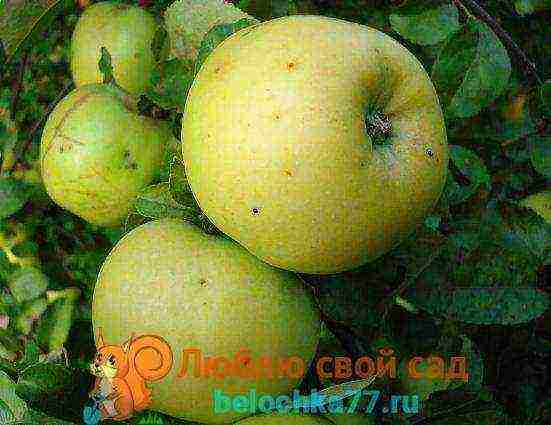
The variety is old and has long been known to gardeners. The fruits weigh 100 ... 140 g, have a golden yellow color and juicy white flesh. The crop can be stored until February. The best pollinator is the White filling apple tree. The tree is characterized by a very high winter hardiness.
Idared
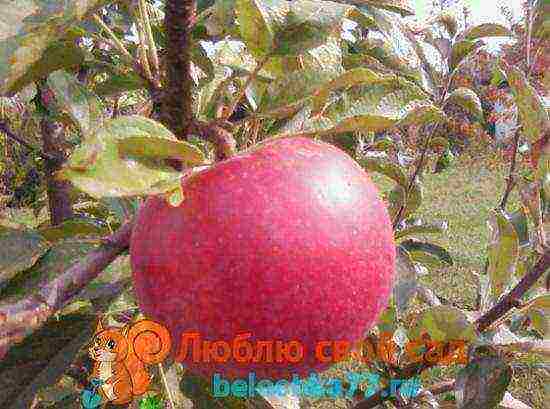
Fruits ripen, weighing up to 190 g, covered with a natural waxy bloom. Apples of sweet and sour taste have a weak aroma and excellent keeping quality up to six months, and when stored in the refrigerator - until summer. Despite its high resistance to a complex of diseases, "Idared" cannot boast of high winter hardiness.
Winter varieties of apple trees, a short description, fruiting: video
Apple varieties suitable for growing in cold climates
If the purpose of growing apples has been determined, you can start looking for a variety that will successfully grow and bear fruit in the region in which the site is located. It is necessary to proceed from the fact that not all varieties grown in zones with a warm southern climate are suitable for the conditions of the Moscow region, let alone more severe zones, such as the Urals or Siberia.
Of course, it will be a shame to choose a sapling, plant it, take care of it, but you will not wait for fruiting. Therefore, below will be listed apple varieties suitable for growing in areas with unfavorable cold climates. They are particularly hardy and at the same time give a good harvest of apples.
Apple varieties for the Moscow region: Zhigulevskoe, Medunitsa, Lobo, Grushevka, Orlik, Bogatyr, Semerenko, Gala, etc.
Apple varieties for the Middle Strip: "Spartan", "Orlovskoe", "Sinap", "Champion", "Idared", "Florina", "Golden Delicious", "Glory to the Winners", etc.
Apple varieties for the Urals and Siberia: "White filling", "Summer striped", "Autumn striped", "Beauty of Sverdlovsk", "Uralskoye bulk", "Anis Sverdlovsky", "Ligol", "Antonovka", "Candy", "Melba", "Wellsi", "Kitayka", "Currency", etc.
After a list of apple varieties suitable for cultivation in the region in which the site is located has been compiled, you can get to know their features and characteristics better, choosing the most suitable variety.
When choosing a variety for a site, they are usually guided by:
- external characteristics of the fruit (color, plaque, size),
- gustatory (dessert taste assessment, aroma),
- pulp consistency (dense / loose, juicy / juicy, granularity),
- as well as some properties of trees (their height in adulthood, spreading, early maturity, resistance to diseases, arid conditions, etc.).
Taking into account the winter hardiness and maturity of the apple tree, you can choose the ideal variety suitable for a particular site. Reasonable analysis of these criteria, and not the pursuit of the largest and most beautiful apples, will allow you to get a high yield of apples in any climatic zone of Russia. In addition, when choosing one or another seedling for a garden plot, it is recommended to be guided by the parameters of a tree in an adult state, especially for gardeners who have plots of small areas.

Those varieties of apple trees that were popular with our grandparents are gradually becoming a thing of the past. Nowadays you rarely see in the gardens Grushovka Moskovskaya, Korobovka, Aport, Borovinka, Kitaika Zolotaya early, and even Antonovka is gradually losing ground. Despite the pleasant taste and other advantages, these varieties are in many ways inferior to those that have been bred over the past few years.
Varieties with which it's time to say goodbye
New varieties of apple trees with improved characteristics of yield, winter hardiness and resistance to the most common diseases appear in the State Register every year. Some of the currently popular varieties of apple trees are distinguished by absolute immunity to scab, others are valued for their excellent keeping quality and shelf life, while others attract with their beautiful appearance and wonderful dessert taste.
It is not at all necessary to plant in your garden exclusively seedlings of those varieties that have proven themselves well twenty or thirty years ago. Try to replace them with new varieties that domestic gardeners have already fallen in love with. It is unlikely that this choice will disappoint you!
Video about apple varieties
How to deal with various diseases of apple trees from year to year, worry about how the trees will survive the winter, and unsuccessfully try to increase the yield, isn't it better to get rid of old varieties? Let's figure out which apple trees you can refuse without regret.
For example, in an old variety Cinnamon striped the apples, although tasty, are not very attractive in appearance, and the yields are not high enough. And apple varieties Autumn striped grow too large, start bearing fruit late and are poorly drought tolerant. Instead of these varieties, it is better to plant the Orlovskoe striped variety with mouth-watering tasty apples and good yield, or Cinnamon new - a variety that starts bearing early, productive and is immune to scab.
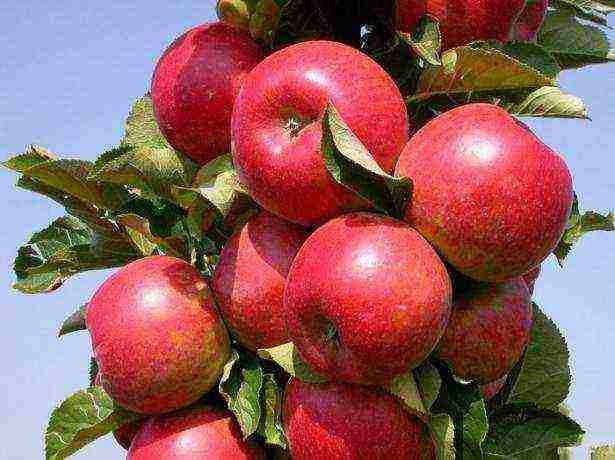
Canadian Quinty is not winter-hardy and scab resistant
Quinty and Folding - summer varieties of apple trees, which are also not very suitable for cultivation. Canadian Quinti is not winter-hardy and resistant to scab, Papirovka does not bear fruit every year, besides, apples are very sour, becoming tasteless when overripe, and do not tolerate transportation well. Gardeners preferred Canadian Melba with delicious fruits to these varieties. And the new varieties Early Aloe and Orlinka are not only high-yielding and fast-growing, but in addition surpass Melba in winter hardiness.
From winter-hardy varieties, you can say goodbye to North synap, giving not particularly tasty fruits, with Pepin with saffron, prone to frequent scab damage, as well as with a variety Memory of Michurin, from which it is difficult to wait for a good harvest. Antonovka ordinary with all its positive qualities, it disappoints gardeners with irregular fruiting, short shelf life of apples and the manifestation of "sunburn" on the fruits during storage. Antonovka has no analogues in terms of fruit taste, but its yield and ripening times can be replaced by such varieties as Legenda, Cinnamon new, Brusnichnoe, Marat Busurin.
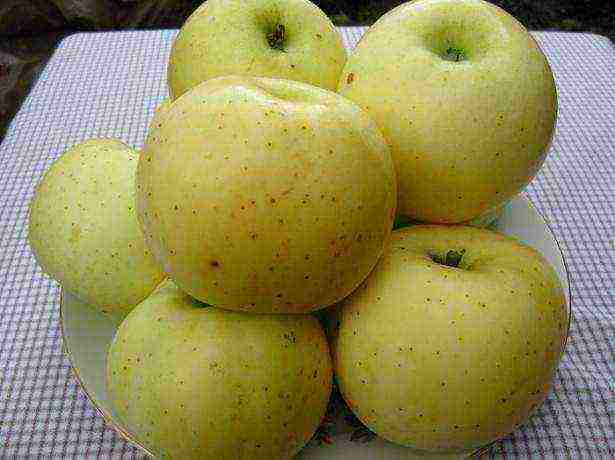
Apple variety "Antonovka ordinary"
The best apple varieties bred in recent years
Through the efforts of breeders, genes for apple resistance to the most dangerous diseases and genes for dwarfism were identified - something that was lacking in the old varieties of apple trees. So, now in the world there are more than 150 varieties that are immune to scab, which means that they do not require treatment with fungicides.
Among the new varieties of apple trees, the following are distinguished by the best characteristics: Liberty, Golden Resistant, Baritone, Enterprise, Ligol, Krasa Sverdlovsk, Lovely Red, Green Blues, Askolda, Williams Pride, Champion, Capital Red, Radogost, Bullfinch.Most of the listed varieties have already become widespread abroad, but in our country they are still only gaining popularity.
Video about early summer varieties of apple trees
We present to your attention a short description of apple varieties that have already earned the love of Russian gardeners:
- The apple variety Medunitsa has become a real find for those who like sweet apples with a honey flavor. Their taste is most pronounced immediately after removal from the branch; fruits can be stored in the refrigerator until January. Fruiting of apple trees begins already in the fourth year, the harvests are plentiful, regular, but with age they become periodic. The Medunitsa variety is immune to rot and scab.
- The Legend apple variety has a sweet, candy taste. Fairly large conical fruits of dark red color have an attractive presentation and the same size. With proper care, the productivity of apple trees is very high, fruiting is annual. Winter hardiness and disease resistance are about the same as that of the best traditional varieties.
- Summer variety Mantet is valued for its early maturity, winter hardiness and good (albeit periodic) yield. Apples begin to ripen from the end of July, they are recommended to be consumed within a month. The pulp of the fruit is very juicy, aromatic, tender, sweetish with sourness. The Mantet variety is unstable to powdery mildew, but it is resistant to scab.
- Until March, the fruits of the Orlik variety, a winter variety of apple trees ripening by mid-September, can be stored (you can see the photo in the tab to the article). The yellow fruits, covered with a solid red blush, have a harmonious sweet-sour dessert taste and a bright aroma. The winter hardiness of apple trees is sufficient, the resistance to scab is average.
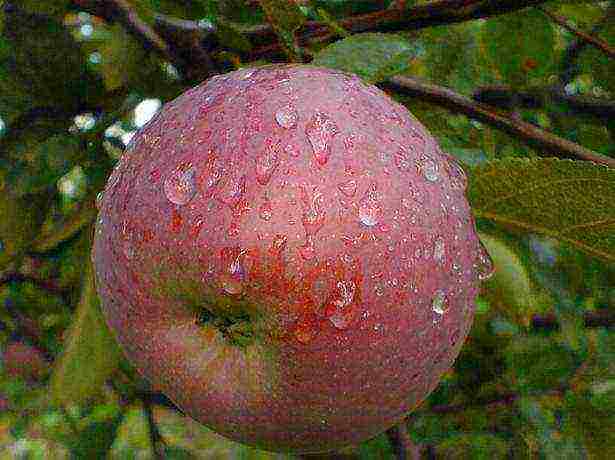
Apple variety "Orlik"
- The late winter apple variety Bogatyr is famous for its high yields. Its large fruits with a pink blush are very aromatic and tasty - their sweetness is successfully complemented by a slight sourness. Fruiting begins in the fifth year after planting.
Particularly noteworthy are the varieties of apple trees included in the State Register that are absolutely resistant to scab: Solnyshko, Imrus, Bolotovskoe, Jubilee of Moscow, Orlovskoe Polesye, Freshness, Kandil Orlovsky, Start, Zdorov'e, Rozhdestvenskoe.
Rate the article:
(1 vote, average: 5 out of 5)
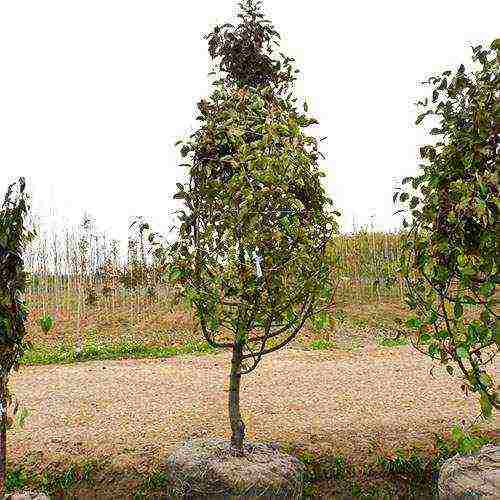 Among the many varieties of apple trees, the gardener will find a fruit tree that meets the needs of an amateur or professional in its characteristics. Breeding work on the breeding of new clones and adaptation of the known ones are carried out in all countries of the Northern Hemisphere. The result is trees with new protective genes and other changes in the structure and fruiting of the apple tree. Let's try to present well-known and diverse varieties of apple trees with photos.
Among the many varieties of apple trees, the gardener will find a fruit tree that meets the needs of an amateur or professional in its characteristics. Breeding work on the breeding of new clones and adaptation of the known ones are carried out in all countries of the Northern Hemisphere. The result is trees with new protective genes and other changes in the structure and fruiting of the apple tree. Let's try to present well-known and diverse varieties of apple trees with photos.
Classification of varieties by traits
In order to determine which seedling your garden needs, you need to know the features of the area. This concept includes:
- what frosts are typical for the area in winter, and how long they last;
- whether there is a prolonged warming in the middle of winter with a sharp cold snap;
- how deep the layer with groundwater lies in the area where the garden grows;
- when stable warm weather sets in;
- how many days the period of positive temperatures lasts during the growing season.
These inputs are used to choose a variety of apple trees for long-term cultivation, as well as to choose the taste of the fruits and their storage time.
When laying a garden from any fruit plants, you need to select zoned varieties - recommended for cultivation in this region.
First of all, it is necessary to select varieties that are suitable for winter hardiness. Those apple trees that develop well in central Russia are unsuitable for Eastern Siberia. If at a tender age they can be preserved, then subsequently the apple tree will suffer from freezing annually.You cannot raise a tree. Frost resistance is transmitted genetically during the formation of a variety
Apple tree Ranetka
 An example of such a tree, which is a small-fruited apple tree, is Ranetka. The ranetka apple tree was obtained by crossing a Siberian small-fruited apple tree with a Chinese one. The apples are small, weighing up to 12 grams, but with a rich taste and smell. Apples do not cause allergies and are included in baby food. They are good in compotes and jam "with legs".
An example of such a tree, which is a small-fruited apple tree, is Ranetka. The ranetka apple tree was obtained by crossing a Siberian small-fruited apple tree with a Chinese one. The apples are small, weighing up to 12 grams, but with a rich taste and smell. Apples do not cause allergies and are included in baby food. They are good in compotes and jam "with legs".
The trees are tall, winter-hardy and give a harvest every year. They do not get scab and are undemanding to the conditions of detention. On the basis of crossing with other varieties, apple trees Dobrynya, Kitayka Saninskaya, and Purple ranetka were bred.
A sprig of ranetki on a large-fruited apple tree will be a useful and exotic addition.
Spartak variety
 The winter-hardy large-fruited variety Spartak is recommended by the State Register for use in the Middle Urals and Eastern Siberia. This variety is popular in areas where apples were recently imported. The variety was bred at the Samara experimental station by the breeder S.P. Kedrin. Grafted on a Chinese tree or Zhigulevskaya forest apple, Spartak saplings begin to bear fruit even before they are planted in a permanent place. In the photo there is an apple tree Spartak on the described rootstock, ready for planting.
The winter-hardy large-fruited variety Spartak is recommended by the State Register for use in the Middle Urals and Eastern Siberia. This variety is popular in areas where apples were recently imported. The variety was bred at the Samara experimental station by the breeder S.P. Kedrin. Grafted on a Chinese tree or Zhigulevskaya forest apple, Spartak saplings begin to bear fruit even before they are planted in a permanent place. In the photo there is an apple tree Spartak on the described rootstock, ready for planting.
The tree quickly wakes up from hibernation and begins an accelerated vegetation. The crop is harvested in early September, but within a month they are gaining taste in the laying place. Apples 90-130 g, there are also large specimens at the beginning of fruiting. The fruits are harvested when they become red-striped. When cultivating, it should be taken into account that the variety is moderately resistant to scab, therefore, preventive treatments during the growing season are mandatory. The branches of a young tree are directed at an acute angle, therefore, a persistent deflection of the skeletal branches to a horizontal position is required, otherwise a break in the future under the weight of the fruit is inevitable.
Apple tree Imant
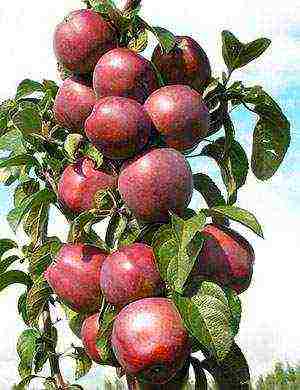 The Imant apple tree will not grow in Siberia, but frost resistance allows it to be cultivated in the climate of the Moscow region. A variety of Belarusian selection, obtained by crossing Anthea and Liberty with the introduction of a gene against scab. You can grow an apple tree on a seed stock and on a clone. In this case, the standard tree begins to bear fruit in the second year after planting. This variety is suitable for industrial use in the Moscow region.
The Imant apple tree will not grow in Siberia, but frost resistance allows it to be cultivated in the climate of the Moscow region. A variety of Belarusian selection, obtained by crossing Anthea and Liberty with the introduction of a gene against scab. You can grow an apple tree on a seed stock and on a clone. In this case, the standard tree begins to bear fruit in the second year after planting. This variety is suitable for industrial use in the Moscow region.
The Imant apple tree is genetically protected from scab, is not very susceptible to stem diseases, cracking and cancer. On a trunk at the age of five, the apple tree gives up to 25 kg of leveled fruits. The apples are large, weighing up to 200 grams. The main color is green, but a superficial red color covers the entire fruit. The taste of the fruit is sweet and sour. Preservation of fruits at low temperatures until June.
Apple-tree Column-shaped Medoc
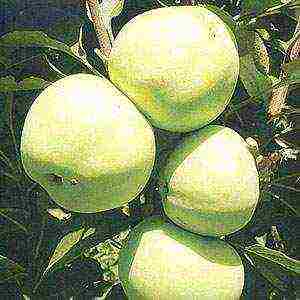 Apple-tree Coloniform Medoc is an autumn variety. The amber apples stuck to the tree are fabulously beautiful. They seem to glow from the honey that has saturated them. The variety is autumn, harvesting is carried out in early September, apples are not stored for long, only a month, but excellent blanks are obtained from them. Apple trees are demanding on fertility, and depending on nutrition, fruits can weigh from 100 to 250 grams.
Apple-tree Coloniform Medoc is an autumn variety. The amber apples stuck to the tree are fabulously beautiful. They seem to glow from the honey that has saturated them. The variety is autumn, harvesting is carried out in early September, apples are not stored for long, only a month, but excellent blanks are obtained from them. Apple trees are demanding on fertility, and depending on nutrition, fruits can weigh from 100 to 250 grams.
A tree with a column up to two meters high and no more than 25 centimeters in diameter. With a compact planting, each columnar-shaped apple tree Medok yields up to 10 kg of amber fruits. The tree is early-growing, can yield in the first year after planting. The planting is thickened, 60 cm between the stems and a meter between the rows. The variety tolerates frost at 40 0, but for guaranteed safety it is better to maintain a winter shelter. Pests rarely attack Medoc, leaving is easier.
Apple trees for the middle lane
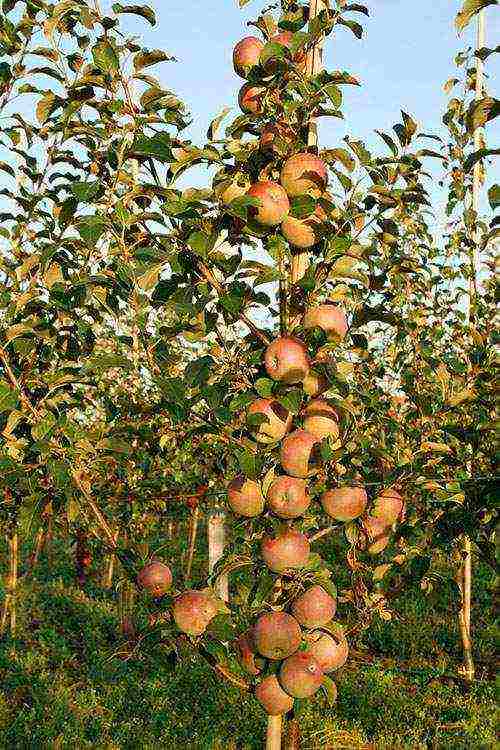 For regionalization in warmer climatic conditions, there are much more varieties of Russian selection, American, French, Baltic. Among them there are species with average winter hardiness, which easily tolerate frosts of 20-30 degrees, tall and medium-sized trees.Therefore, we will present these types of apple trees according to the degree of their early maturity. It is essential to get the harvest 5 or 9 years after the scion. The time to harvest depends on the seed stock or the cultivar grafted onto the clone.
For regionalization in warmer climatic conditions, there are much more varieties of Russian selection, American, French, Baltic. Among them there are species with average winter hardiness, which easily tolerate frosts of 20-30 degrees, tall and medium-sized trees.Therefore, we will present these types of apple trees according to the degree of their early maturity. It is essential to get the harvest 5 or 9 years after the scion. The time to harvest depends on the seed stock or the cultivar grafted onto the clone.
Low-growing compact stems are represented by apple varieties with a photo:
- winter - Sun, Orlovskoe striped;
- mid-season Champion;
- early variety Elena.
In one garden, varieties of different ripening periods are usually cultivated, allowing them to have healing fruits throughout the year. Summer varieties are used within a month after harvest, winter varieties, under appropriate conditions, are stored until mid-summer.
Apple tree Elena
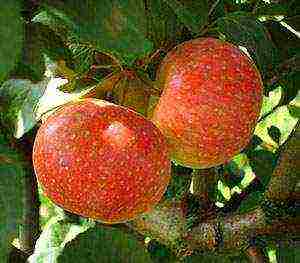 So, Elena's apple tree belongs to summer varieties. The variety of Belarusian selection was accepted for cultivation in 2001 and for this region it is a winter-hardy crop with apple flavor on a five-point scale of 4.8 - a very good indicator. Trees of medium height, on dwarf rootstocks bear fruit in the second or third year. The apple tree is scab resistant. The ovary on the Elena apple tree is abundant, thinning is required so as not to overload the tree. In the conditions of Belarus, apples ripen at the end of July.
So, Elena's apple tree belongs to summer varieties. The variety of Belarusian selection was accepted for cultivation in 2001 and for this region it is a winter-hardy crop with apple flavor on a five-point scale of 4.8 - a very good indicator. Trees of medium height, on dwarf rootstocks bear fruit in the second or third year. The apple tree is scab resistant. The ovary on the Elena apple tree is abundant, thinning is required so as not to overload the tree. In the conditions of Belarus, apples ripen at the end of July.
Apple Champion
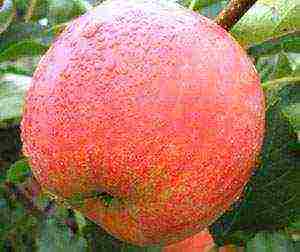 The middle variety is the Champion Apple-tree. The apple tree of Czech selection and rapidly spread throughout the European part in the forest-steppe of Ukraine. Even in Ukraine, the variety needs to be insulated for the winter.
The middle variety is the Champion Apple-tree. The apple tree of Czech selection and rapidly spread throughout the European part in the forest-steppe of Ukraine. Even in Ukraine, the variety needs to be insulated for the winter.
The tree is not tall, the annual growth is small. Resistance to diseases and pests is average, high to scab. The variety is fast-growing and requires the presence of a pollinator for good fruiting. Fruiting is annual, abundant. Lined apples, 190 grams each, are harvested in September. The harvest is stored for more than six months. The taste of red fruits is sweet and sour.
Apple-tree Orlovskoe striped
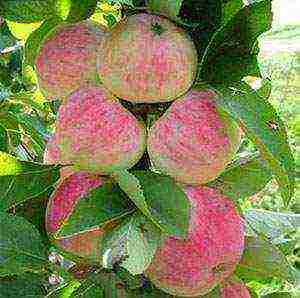 The winter variety is the Orlovskoe striped apple tree. The variety was bred and entered the register as recommended for industrial use in 1986. For central Russia, the Oryol region, the winter hardiness of the variety is good. The variety is considered elite in terms of yield and taste of the fruit. The only drawback is that apples have a thin skin, and special care is required when harvesting and transporting. The variety is resistant to scab and begins to bear fruit in 3-4 years.
The winter variety is the Orlovskoe striped apple tree. The variety was bred and entered the register as recommended for industrial use in 1986. For central Russia, the Oryol region, the winter hardiness of the variety is good. The variety is considered elite in terms of yield and taste of the fruit. The only drawback is that apples have a thin skin, and special care is required when harvesting and transporting. The variety is resistant to scab and begins to bear fruit in 3-4 years.
Apple tree Sun
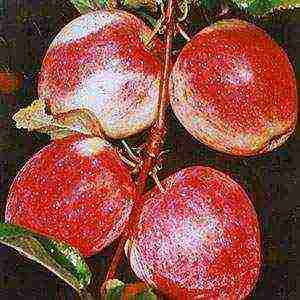 The winter apple tree Solnyshko received a residence permit in the gardens of central Russia in 2001. But the winter hardiness of the variety is excellent. Freezing branches at 40 ° C did not have any consequences. Suitable for growing on dwarf rootstocks and itself has a short stature. A fast growing variety suitable for industrial gardens. The Sun apple tree is immune to scab at the genetic level. The fruits ripen in the second half of September and are stored until the New Year.
The winter apple tree Solnyshko received a residence permit in the gardens of central Russia in 2001. But the winter hardiness of the variety is excellent. Freezing branches at 40 ° C did not have any consequences. Suitable for growing on dwarf rootstocks and itself has a short stature. A fast growing variety suitable for industrial gardens. The Sun apple tree is immune to scab at the genetic level. The fruits ripen in the second half of September and are stored until the New Year.
Apple tree Streyfling
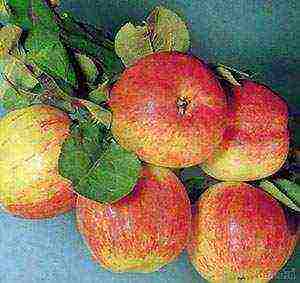 Tall varieties are the oldest and have long established themselves as reliable. They serve as mother material for breeding new varieties of apple trees. Among them, it is impossible to pass by the Baltic apple variety Streifling. A huge tree 8 meters high and with the same spreading crown from a distance resembles an inverted cauldron. The tree is widespread in the middle zone with low winter temperatures. Apples are large up to 200 grams. The apple tree loves moisture and does not tolerate drought. Apples are harvested in September, stored for 2-3 months. Fruits are fastened well and, with a delay in harvesting, they do not crumble, but they are stored worse. The winter hardiness of the Streyfling apple tree is average, but sufficient for its habitat. The apple tree does not bear fruit every year.
Tall varieties are the oldest and have long established themselves as reliable. They serve as mother material for breeding new varieties of apple trees. Among them, it is impossible to pass by the Baltic apple variety Streifling. A huge tree 8 meters high and with the same spreading crown from a distance resembles an inverted cauldron. The tree is widespread in the middle zone with low winter temperatures. Apples are large up to 200 grams. The apple tree loves moisture and does not tolerate drought. Apples are harvested in September, stored for 2-3 months. Fruits are fastened well and, with a delay in harvesting, they do not crumble, but they are stored worse. The winter hardiness of the Streyfling apple tree is average, but sufficient for its habitat. The apple tree does not bear fruit every year.
Apple tree Idared
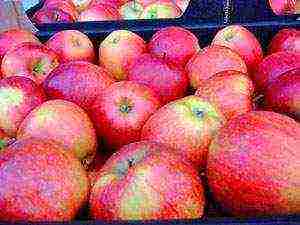 The representative of the American variety is the Idared apple tree. The winter variety is grown in the south of our country and in Ukraine. The variety is intended for export deliveries for the commercial quality of the fruit. Filmed in September, they retain their commercial qualities for six months. The tree is not resistant to scab disease.
The representative of the American variety is the Idared apple tree. The winter variety is grown in the south of our country and in Ukraine. The variety is intended for export deliveries for the commercial quality of the fruit. Filmed in September, they retain their commercial qualities for six months. The tree is not resistant to scab disease.
Apple-tree Belfer-Chinese
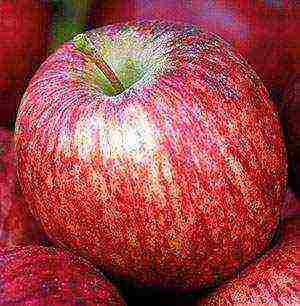 Apple-tree Belfer-Kitayka is a pre-war variety of Michurinsk breeding. A tall variety with late autumn apples of excellent taste gave rise to many varieties of domestic selection.Fruiting of this apple tree begins in the eighth or ninth year. The apple tree requires protection from pests and scab, has a low winter hardiness in the Michurinsky region.
Apple-tree Belfer-Kitayka is a pre-war variety of Michurinsk breeding. A tall variety with late autumn apples of excellent taste gave rise to many varieties of domestic selection.Fruiting of this apple tree begins in the eighth or ninth year. The apple tree requires protection from pests and scab, has a low winter hardiness in the Michurinsky region.
Apple-tree Borovinka
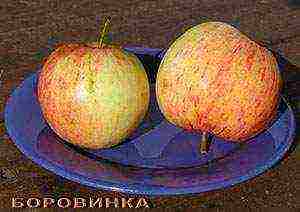 The Borovinka apple variety belongs to the old varieties of early ripening. It is a relatively early fruiting variety. But his apples are not large, only 90 grams, the taste is average, the shelf life is only one month. In addition, the fruits and leaves of the apple tree of this variety are strongly affected by scab.
The Borovinka apple variety belongs to the old varieties of early ripening. It is a relatively early fruiting variety. But his apples are not large, only 90 grams, the taste is average, the shelf life is only one month. In addition, the fruits and leaves of the apple tree of this variety are strongly affected by scab.
Apple tree Gloucester
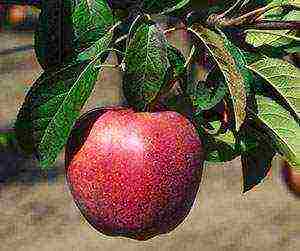 The Gloucester apple tree can grow on a dwarf rootstock or be a large, spreading tree. A seedling on a seedling rootstock is characterized by long development until the first harvest. Therefore, maturity can be accelerated artificially:
The Gloucester apple tree can grow on a dwarf rootstock or be a large, spreading tree. A seedling on a seedling rootstock is characterized by long development until the first harvest. Therefore, maturity can be accelerated artificially:
- formation of a crown with bending of branches to a horizontal position;
- the use of special drugs that inhibit the summer growth of branches;
- excluding nitrogen component from top dressing.
On a semi-dwarf rootstock, the apple tree begins to bear fruit in the fourth year. The fruits are large, up to 200 grams. The taste of apples is high, slightly sour. They can be stored for up to 4 months and are not injured during transportation.
Apple tree Kovalenkovskoe
 The large-fruited Kovalenkovskoe apple tree was bred by a breeder of Belarus. The variety is medium-sized and fast-growing. On a dwarf rootstock, it develops into an adult tree in the third year. The fruits of the summer ripening period, the first harvest is removed by the Apple Savior. Apples acquire their taste after a two-week rest after harvesting. Fruits do not crumble, ripening is stretched. The variety is assigned to the Central Region of Russia and is widespread in the homeland of creation.
The large-fruited Kovalenkovskoe apple tree was bred by a breeder of Belarus. The variety is medium-sized and fast-growing. On a dwarf rootstock, it develops into an adult tree in the third year. The fruits of the summer ripening period, the first harvest is removed by the Apple Savior. Apples acquire their taste after a two-week rest after harvesting. Fruits do not crumble, ripening is stretched. The variety is assigned to the Central Region of Russia and is widespread in the homeland of creation.
Apple tree Jonathan
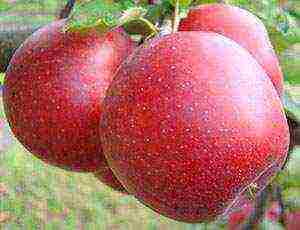 Apple tree Jonathan refers to an American guest on our continent. In the conditions of Russia, this apple variety is grown only in the North Caucasus. Fruiting on medium rootstocks after 5 years. The apple tree gives fruits annually and the maximum yield from one apple tree is 490 kg. The apple tree is scab resistant and is often sick with powdery mildew. The fruits have excellent dessert taste and long shelf life. The well-known apple variety Idared is bred on the basis of Jonathan.
Apple tree Jonathan refers to an American guest on our continent. In the conditions of Russia, this apple variety is grown only in the North Caucasus. Fruiting on medium rootstocks after 5 years. The apple tree gives fruits annually and the maximum yield from one apple tree is 490 kg. The apple tree is scab resistant and is often sick with powdery mildew. The fruits have excellent dessert taste and long shelf life. The well-known apple variety Idared is bred on the basis of Jonathan.
Apple tree Florina
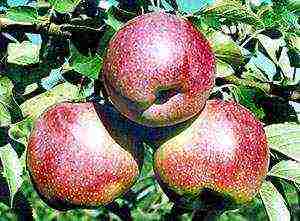 The French guest, the apple tree Florina, took her place in the steppes and forest-steppes. Winter variety, sweet apples. Medium-sized tree with a rounded crown. The height of the tree is up to 5 meters. The tree blooms for a long time and has time to perfectly pollinate. Therefore, fruit set is good. Harvest in October. Apples store well and only get sweeter over time. The variety is resistant to scab and bacterial diseases.
The French guest, the apple tree Florina, took her place in the steppes and forest-steppes. Winter variety, sweet apples. Medium-sized tree with a rounded crown. The height of the tree is up to 5 meters. The tree blooms for a long time and has time to perfectly pollinate. Therefore, fruit set is good. Harvest in October. Apples store well and only get sweeter over time. The variety is resistant to scab and bacterial diseases.
Apple Royalty
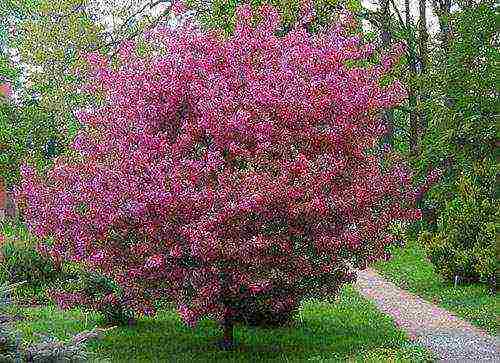 But apple trees are valued not only as fruit trees. The line of decorative trees is also represented by well-remembered trees. These species include the Royalty, Nedzvetsky, Kitayka apple tree and more than 190 varieties of ornamental trees. The royalty dwarf apple tree will adorn any composition. It is compared in bloom to sakura. These ornamental apple trees are a decoration of the landscape. The triumphant flowering lasts two weeks, but then the bush with cherry leaves is decorative. The fruits of the Royalty apple tree are inedible.
But apple trees are valued not only as fruit trees. The line of decorative trees is also represented by well-remembered trees. These species include the Royalty, Nedzvetsky, Kitayka apple tree and more than 190 varieties of ornamental trees. The royalty dwarf apple tree will adorn any composition. It is compared in bloom to sakura. These ornamental apple trees are a decoration of the landscape. The triumphant flowering lasts two weeks, but then the bush with cherry leaves is decorative. The fruits of the Royalty apple tree are inedible.
In this collection, we tried to present a little information on the apple world. But this is a small fraction of knowledge about this amazing tree of life.
Apple varieties at their summer cottage - video
Happy owners of summer cottages are always in a hurry to master their native weave in the shortest possible time. At the dacha, you want to have the whole set of fruits and berries, especially apples. And here, amateur beginners make the first and very serious mistake. They clutter the garden with a large list of crops planted without taking into account their requirements for the environment and compatibility with neighbors. They are of little interest in the types of selected crops, which will require the appropriate space and area, and buy tall varieties with a spreading crown. In the struggle for survival, such crops will purposefully oppress small neighbors.
Apples on the branches
A small or large family needs a different amount of fruit and berry products, but everyone wants to have fresh fruits and berries for a long time. A thoughtful selection of varieties of the desired culture can serve as a fulfillment of desire. Breeders for different regions of the Russian Federation offer a huge list of varieties and they are all temptingly beautiful on color applications. However, the garden consists of perennials (for apple trees 30-35 years old) and it can be very difficult to correct the mistake.
To avoid mistakes, you need to think in advance what types and varieties of apple trees are suitable for your site, select the ones you like. Novice gardeners should begin acquaintance with the varieties in the winter, using their garden diary, in which to enter the desired selected varieties and your possibilities when laying an apple orchard or planting several seedlings in a small cottage or land plot.
Varietal planning of an apple orchard
On a summer cottage of 6 acres for a family of 4-5 people, 5-6 varieties of apple trees are enough. Of these, 2 varieties are summer, 1 medium and 2 late. To decorate a rest corner, a decorative fence, you can purchase a couple of small-fruited apple varieties (ranetka, Chinese, paradise apple and others). In a garden diary, make a table in which you briefly describe the desired qualities of the fruit and select varieties for them.
Apple trees can be divided into several groups.
According to the habit of the bush: tall, semi-dwarf, dwarf, columnar.
Tall apple trees - crops with a plant height of up to 8 m, a well-developed root system that penetrates deeply into the soil (Zhigulevskoe, Belfleur-Kitaika). It is recommended to grow them only in areas where groundwater is below 3 m depth.
Semi-dwarf apple trees - crops up to 5 m high (Elena). For them, a site with groundwater occurrence no higher than 2.5 m is suitable.
Dwarf apple trees - crops are undersized, up to 2.5 m in height (Gloucester, Solnyshko). The root system is relatively shallow, located in a meter layer of soil. The varieties are suitable for areas with a high groundwater table (up to 1.5 m).
Cold-resistant: frost-resistant, thermophilic.
By species: summer, autumn, winter, late winter.
By taste: sour, sweet, dessert and others.
Apple tree with fruits
Apple varieties for the middle and northern regions of Russia
For the middle and northern regions of Russia, characterized by a cold climate with prolonged frosts, when selecting varieties of apple trees, one should focus on their frost resistance.
Winter-hardy varieties of apple trees are: White filling, Candy, Grushovka Moskovskaya, Borovinka, Antonovka ordinary, Anis scarlet, Zvezdochka, Medunitsa, Sinap, Moskovskoe, Elena, Solnyshko and others.
Recently, breeders have proposed new frost-resistant varieties that can withstand temperatures down to -35 ° C: Marat Busurin, Mayak Zagorya, Winter Beauty, Imrus, Brusnichnoe, Narodnoe, Young Naturalist.
The first place in terms of winter hardiness from new varieties of apple trees is taken by the Gift to Grafsky, Skala, which can withstand 40-42 degrees of frost.
Of the varieties of apple trees that are not resistant to frost, one can distinguish: Cinnamon striped, Melba, Mantent, Champion, Augusta, Koreyanka, Vatutin, Freshness, Lobo, Bogatyr, Bellefleur-Chinese, Pepin. However, this property does not detract from their other qualities. They are suitable for medium-sized regions with a short cold period, without persistent severe frosts.
Apple grade Antonovka
Winter-hardy apple varieties for the southern regions
When buying apple seedlings for your small garden, be sure to ask about its species. Crops intended for middle and northern regions (even frost-resistant ones) in southern growing conditions can die from return spring frosts.
For the south, apple trees are most suitable for the weather conditions: renet Simirenko, Babushkino, Buzhor, Wagner, Golden, Glory to the Winner, White filling, Arkad yellow, etc.
Apple varieties by species
Summer varieties of apple trees
By species, apple varieties are subdivided into summer, autumn, winter, late winter. Fruiting of summer and so-called dessert varieties begins in July, the main harvest peak is in August. But summer varieties do not have keeping quality. The shelf life of fruits does not exceed 1-2 weeks. They must be used for food immediately after harvesting. Pleasant sweet-sour or sweet, juicy pulp, with a strong, often honey aroma, induces an appetite.
The most prominent representatives of early or summer apples are Elena, Medunitsa, Bely naliv, Mantent, Melba, Grushovka Moskovskaya, Candy, Borovinka, Korichnoe and others.
Autumn varieties of apple trees
The first apples of autumn varieties appear at the end of August. The main fruiting occurs in September. Their keeping quality is low, and its duration does not exceed 2-3 months. The pulp is juicy, sweet with sourness. When choosing a variety of apple trees for your garden, keep in mind that it is the summer and autumn varieties that are used for winter preparations in the form of juices, compotes, jams and others. Winter-hardy autumn varieties can be stored for up to 3 months, retaining their taste.
Winter-hardy autumn varieties of apple trees include Narodnoye, Streyfling, Orlovskoye, Bessemyanka, Aromatnoe, Korichnoye, Koreyanka and others. Among them there are fast-ripening (Orlovskoe), sweet (Narodnoe). On the market you can always buy Koreyanka, Cinnamon striped, and other varieties of this type. Determine which taste and aroma you like best and enter the data in your garden diary.
For southern regions with "warm winters" apple varieties Champion, Aydaret are suitable.
Apple grade White filling Apple grade Candy
Winter varieties of apple trees
When choosing a variety of apple trees, the main attention should be paid to winter and late winter varieties, since they will provide the body with vitamins in the most impoverished period - February-April: Bogatyr, Antonovka, Welsey, Pepin, Zhigulevskoe, Zvezdochka, Aphrodite, Orlovskoe, Solnyshko and others.
The crop is filmed at technical maturity in September-October. They cannot be eaten immediately. Their taste is usually sour, some have a tart, coarse flesh. They are perfectly stored for six months, and Simirenko, Bogatyr, Zvezdochka do not lose their qualities up to 9 months of storage.
Many gardeners consider the Moskovsky variety to be the champion in winter hardiness and storage duration, whose fruits are stored until the next harvest. Winter varieties in the south, in the middle regions, need a long warm autumn, hot summer. During this period, apple trees accumulate the necessary sugars and aromatic compounds, which give a unique taste and smell to the fruits when they reach biological maturity, which occurs in the winter months (Simirenko, Antonovka).
Winter varieties of apple trees, as a rule, have good keeping quality. For long-term storage, winter varieties with a sour taste of fruits are worthy of attention: Berkutovskoe, Afrodita, Bogatyr, Moskovskoe later. Their high pulp density and sour taste limit their fresh use immediately after harvest. Possessing good keeping quality, winter varieties gradually ripen during storage and by February-March they gain the whole bouquet of taste: juiciness, pleasant sourness, aroma.
Late winter varieties of apple trees
Of the late winter varieties, the most famous are Bellefleur-Kitayka, Sinap, Lobo, Moskovskoye, Freshness. Varieties Lobo and Freshness are well stored for a long time, but they have mediocre winter hardiness, and Bellefleur-Kitayka is distinguished by its tallness and large crown habit. All late winter (of the considered varieties) are large-fruited.
Columnar varieties of apple trees
A separate group includes columnar apple trees, which have recently been rapidly adapting to private garden estates. This type is remarkable in that it has no side branches. The crop grows in one trunk, the habit of the bush is 0.25-1.0 m, the yield is formed right on the trunk, the yield is high.
The varieties of apple trees of this type differ in their high resistance to diseases and pests, they are resistant to frost, but have a shallow penetrating root system. The length of individual roots does not exceed 25-30 cm and are located so close to the soil surface that even shallow loosening can damage them. The superficial root system of columnar apple trees requires attention, needs watering (2-3 times a week, followed by mulching) and top dressing. Drip irrigation is suitable for them.
Apple variety August
The best varieties of columnar apple trees that can be grown in the middle and Siberian regions are Vasyugan, Moscow Necklace, Senator, President, Ostankino, Triumph, Currency, Arbat, Medok, Jin, Dialogue.
Of these, the most frost-resistant, develop well and form harvests in the Siberian regions - the Moscow necklace and Vasyugan.
The summer varieties of columnar apple trees include Malyukha, President, Medoc. A very interesting variety Medoc. It belongs to the summer-autumn varieties, but is late-ripening. Fruits in technical ripeness are harvested at the end of August.
Winter varieties of columnar apple trees Amber necklace, Bolero, Currency, Moscow necklace are distinguished by their high keeping quality. The late-ripening variety Moscow Necklace is removed at the end of September. It retains its qualities until March.
Growing conditions for apple trees
Apple trees grow and bear fruit on average for 30-35 years. Therefore, when laying an apple orchard, and even when planting several seedlings, you need to be extremely attentive to the agrotechnical requirements of the culture.
Site selection
Apple trees do not tolerate low-lying places, where spring frosts slide and stagnate. From recurrent and prolonged frosts in all regions (including southern ones), complete freezing or severe damage to flower buds and blossoming flowers of this culture is possible. This means that at the dacha you need to pick up a site that is elevated and protected from cold air currents. If possible, select a separate, with suitable conditions, area for 5-8 apple trees. So full care can be provided and the requirements for agricultural technology can be fulfilled.
In a small summer cottage, pay attention to the columnar apple trees. A small crop habit will allow planting up to 12-15 varieties on a relatively small area. Some gardeners planted them in a bed, creating a unique, elegant, "fragrant" path during the flowering and ripening of apples.
Apple trees don't like shade. They need evenly lit areas, and not occupied by someone else's root system. Therefore, try to plant young seedlings at a distance from old trees. If the site allows, apple trees can be planted in small groups in places that are suitable for environmental and agricultural requirements. In the garden diary, on the general plot of the site, mark the places allocated for the apple trees. The next concern is the composition and quality of the soil in the areas allocated for apple trees.
Soil for apple trees
For apple trees, neutral soils with a pH of 5.5-6.5 are necessary, provided with sufficient nutrients, especially nitrogen, with good drainage properties, it is possible of medium density (loamy chernozems, ordinary), but air and permeable with high moisture capacity. The most suitable are ordinary chernozems, loamy with a predominance of sandy loam, loess-like loam. On light soils, constant irrigation is necessary. Peaty, highly acidic soils, with a close location of underground waters, with stagnant waters after rains and irrigation are not suitable. Apple trees with a deep root system develop poorly and die early on sandy or clay-sandy soils.
Having picked up a good location and type of soil, you can buy seedlings in the spring and plant your apple orchard.
Attention! We ask you to write in the comments to this article: what varieties of apple trees do you grow, how much they satisfy you, how they correspond to the declared characteristics. Do not forget to indicate your region and features of agricultural technology. Thank you!


